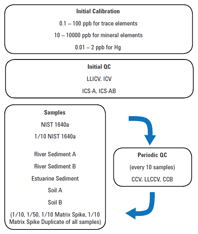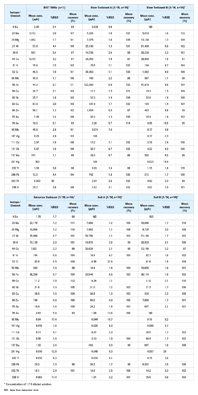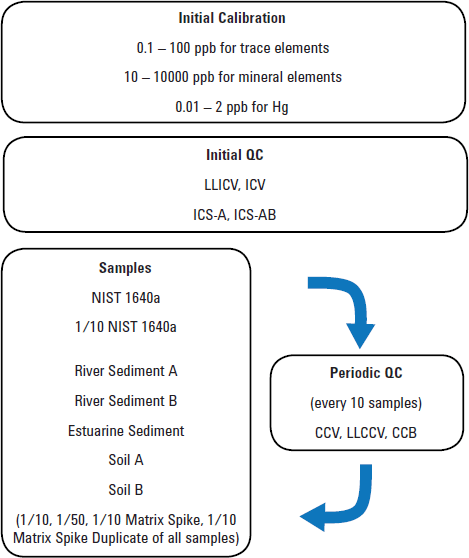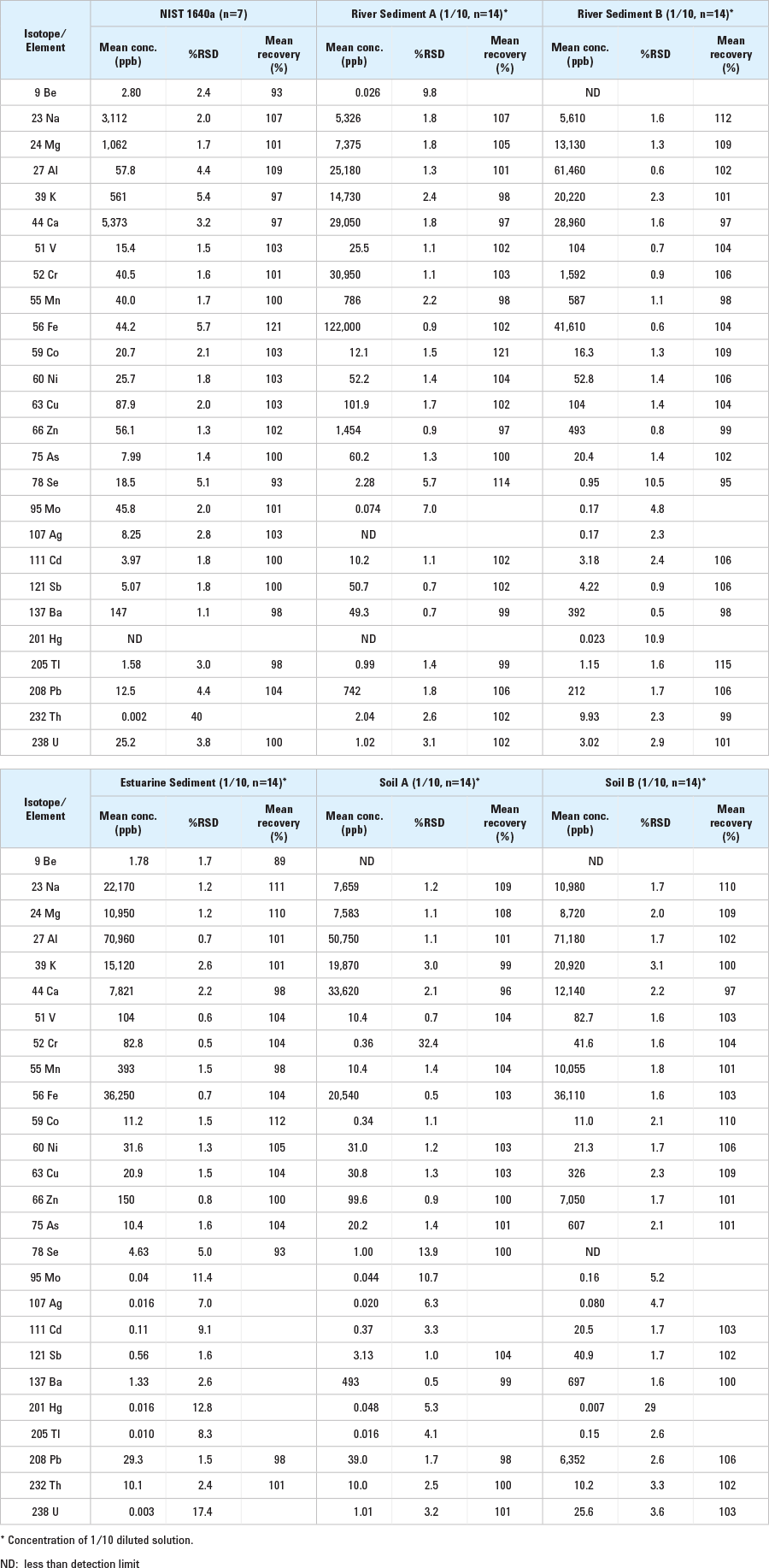Access Agilent eNewsletter, November 2014
>> Update My Profile | Subscribe to Access Agilent | Article Directory

Maximizing productivity of soil sample analysis using ICP-MS with ISIS 3 discrete sampling
By Kazuo Yamanaka
Agilent ICP-MS Senior Applications Chemist
and Steve Wilbur
Agilent ICP-MS Software Product Manager
Increased competition and financial pressure has led to a greater focus on the productivity of contract environmental laboratories, including those involved in the analysis of complex high-matrix samples such as soils and sludges. At the same time, it is essential that data quality and ease-of-use are not compromised. In response to the need for the highest possible productivity, Agilent has developed a third generation Integrated Sample Introduction System (ISIS 3). By combining the unique benefits of a collision cell that operates effectively with an inert cell gas (helium), aerosol dilution using Agilent’s Ultra High Matrix Introduction (UHMI) technology, and discrete sampling (DS) with ISIS 3, a rare synergy has been achieved. This has resulted in a much faster system with improved ease-of-use and superior matrix tolerance, allowing Agilent 7900 ICP-MS users to perform high speed discrete sampling analysis of complex soil samples while maintaining full compliance with US EPA requirements for data integrity.
 Enlarge
Enlarge
Figure 1. Sequence of samples analyzed in a single run. Sample Block was repeated continuously with automatic insertion of Periodic QC Block after every 10 sample runs. Total number of samples analyzed in 9 hours 35 minutes was 383.
383 samples performance tested over 9 hours in contract lab simulation
Accuracy, precision, productivity, and long-term stability were tested by analyzing a long sequence of samples simulating a typical workload in a contract environmental laboratory. The samples consisted of Certified Reference Materials (CRMs) for water, soil, and sediment; sample-spikes; and Quality Control (QC) samples as specified by EPA method 6020A (Figure 1).
EPA 6020A compliant analysis in less than 90 seconds per sample
EPA method 6020A is a performance-based method. Consequently, unlike method 200.8 for drinking water analysis, the EPA has not restricted the use of collision/reaction cell (CRC) technology for method 6020 applications.
The fast cell gas switching capability of the Agilent 7900 ICP-MS permits the use of multiple gas modes even for the short acquisition times required with discrete sampling. Data quality is maintained when short integration times are used, due to the 7900 instrument’s very high sensitivity. Here we used He cell mode for the analysis of most elements and no gas mode for low mass elements. In all, 383 analyses were performed in 9 hours 35 minutes with a run-to-run time of less than 90 seconds per sample. The throughput was increased by 〜 30% compared to a similar study carried out using a 7700x ICP-MS with ISIS 2.
 Enlarge
Enlarge
Table 1. Mean measured values, percent Relative Standard Deviations (%RSDs) and mean recoveries for all certified elements in the six CRMs analyzed. Blank cells indicate no certified value.
Recovery of certified reference values
In this example, six CRM samples were analyzed repeatedly. They were NIST 1640a Natural Water (NIST, Gaithersburg MD), CRM River Sediment A, CRM River Sediment B, CRM Estuarine Sediment, CRM Soil A, and CRM Soil B (High Purity Standards – Charleston SC, USA). NIST 1640a was analyzed undiluted, while the other reference materials were analyzed after both 10x and 50x dilutions. Values shown in Table 1 were taken from the 10x dilutions. Each sample was measured multiple times throughout the sequence. The mean concentration, percent relative standard deviation (% RSD), and mean recovery were calculated for each analyte (Table 1). Not all reference materials are certified for all analytes – blank cells indicate the absence of a certified value.
It is noteworthy that while the Agilent 7900 ICP-MS is capable of quickly and accurately measuring trace elements in natural waters, it is also able to measure very high concentration mineral elements accurately, under the same analytical conditions and in the same run as all of the trace elements. The aluminum concentration in 1/10 Soil B is 70 ppm. The measured concentration of 71 ppm represents 102% recovery, even though the highest calibration standard (100 ppb) was nearly 1000x below the measured sample value.
Exceptional accuracy and higher throughput with ISIS 3 discrete sampling
Long sequences of high Total Dissolved Solids (TDS) samples can be analyzed with excellent accuracy, precision, and long-term stability using the Agilent 7900 ICP-MS with UHMI option and ISIS 3 operated in discrete sampling mode. The ISIS 3 has a high-speed intake pump and close-coupled 7-port switching valve. The net benefit is simpler operation, higher throughput, and improved long-term stability over conventional ICP-MS systems. Download Application Note 5991-5208EN to learn more.
Agilent ICP-MS Journal
Are you interested in trace metals analysis and eager to keep up-to-date with the latest developments in the field of ICP-MS? Then we invite you to take a closer look at Agilent’s dedicated ICP-MS Journal. Published four times a year and available as a PDF, you can view the latest issue of the ICP-MS Journal, plus all previous copies, by visiting the ICP-MS Journal Archive.
To receive a personal copy of the ICP-MS Journal direct to your inbox, please sign up here.
>> Update My Profile | Subscribe to Access Agilent | Article Directory

